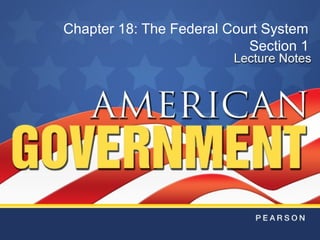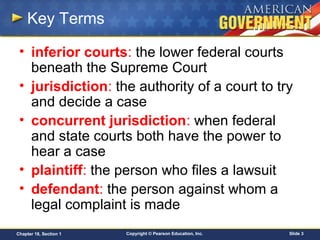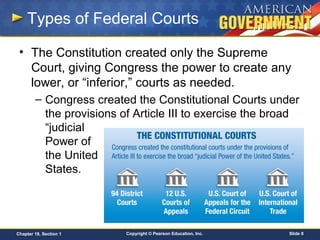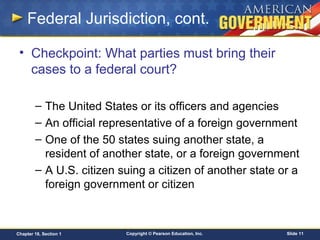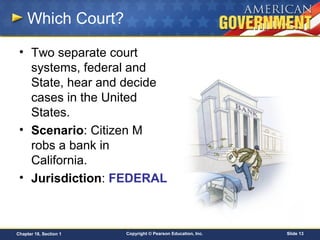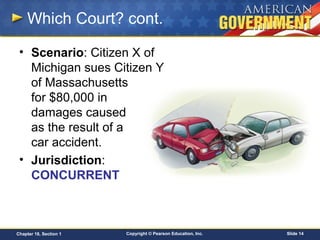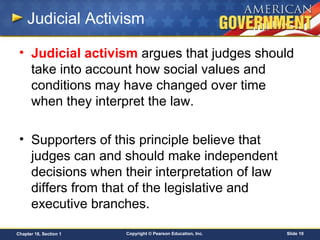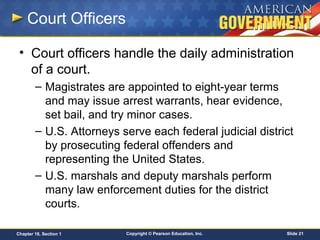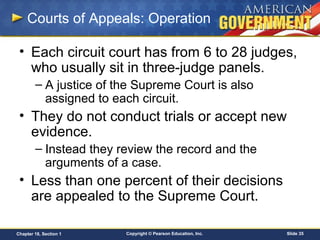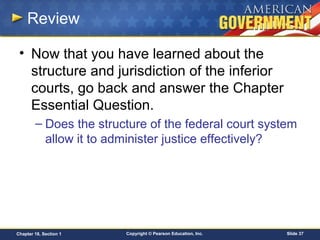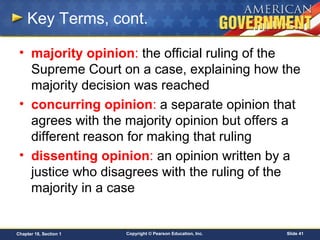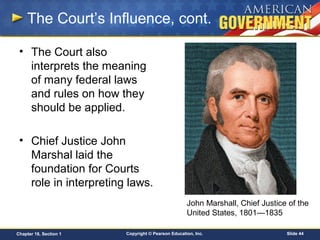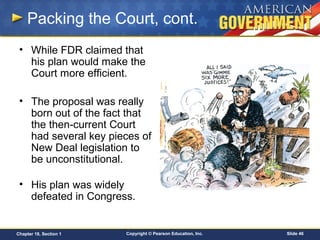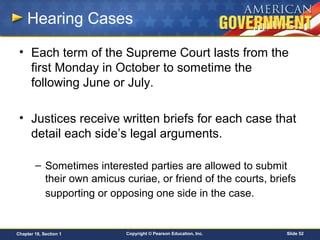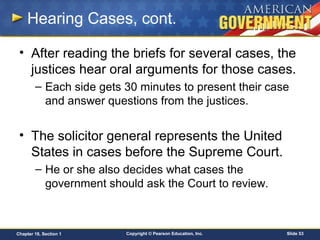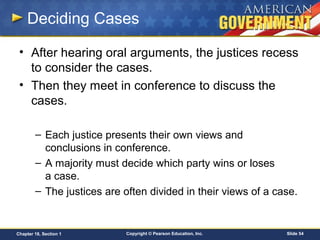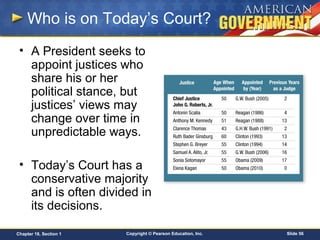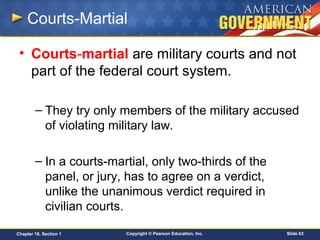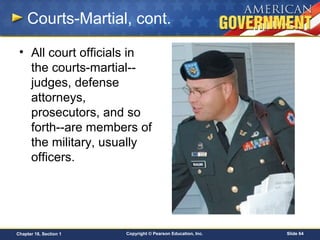The document provides an overview of the federal court system in the United States. It discusses the structure and jurisdiction of the different levels of federal courts, including:
- District courts, which are the federal trial courts that handle around 80% of federal cases. There are 94 district courts serving the 50 states and U.S. territories.
- Courts of appeals, of which there are 13, that hear appeals from district courts and special courts.
- The Court of International Trade, which tries civil cases related to U.S. trade laws.
It also outlines the roles of judges, magistrates, U.S. attorneys, and other court officers in the federal court system.
